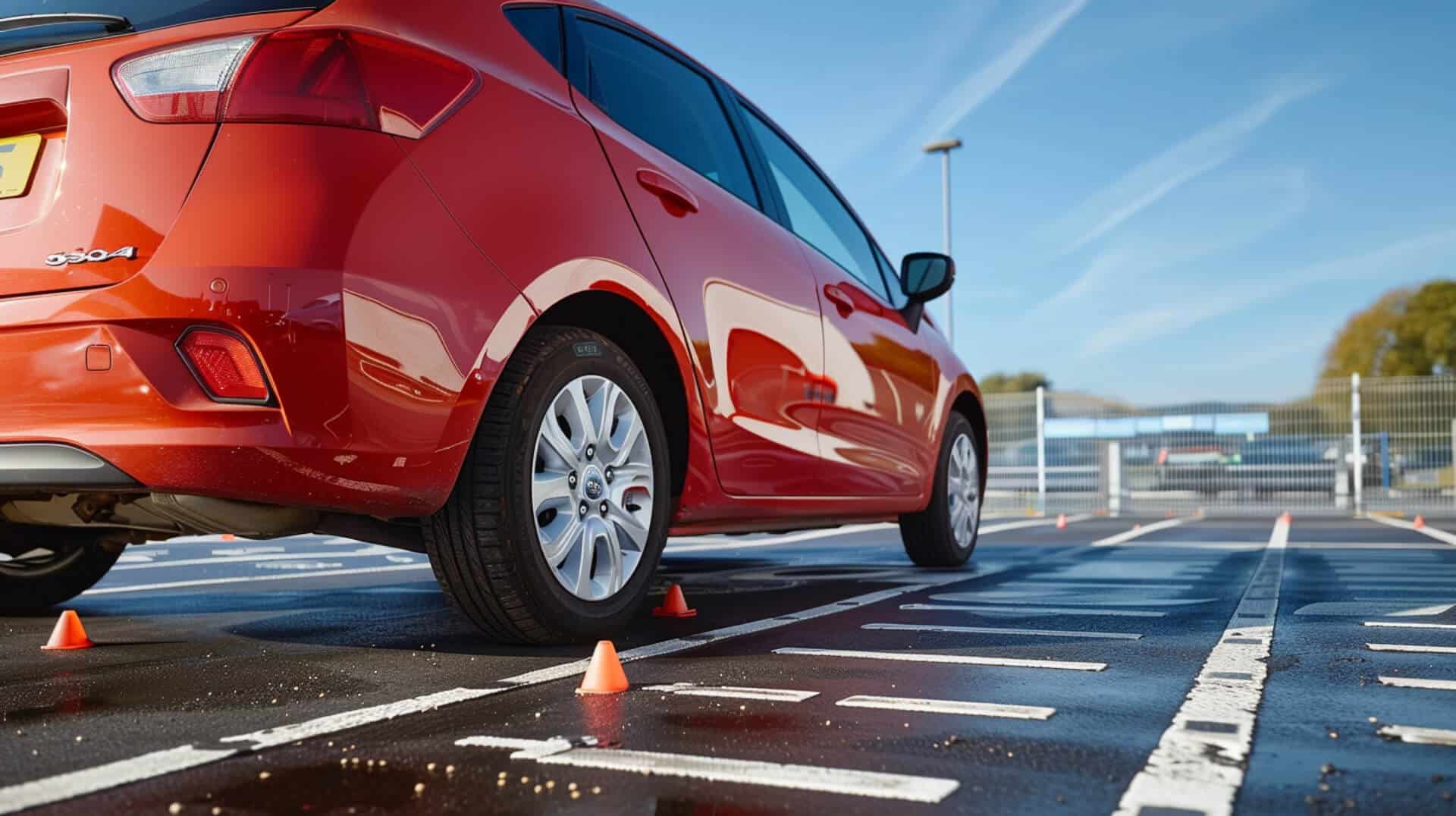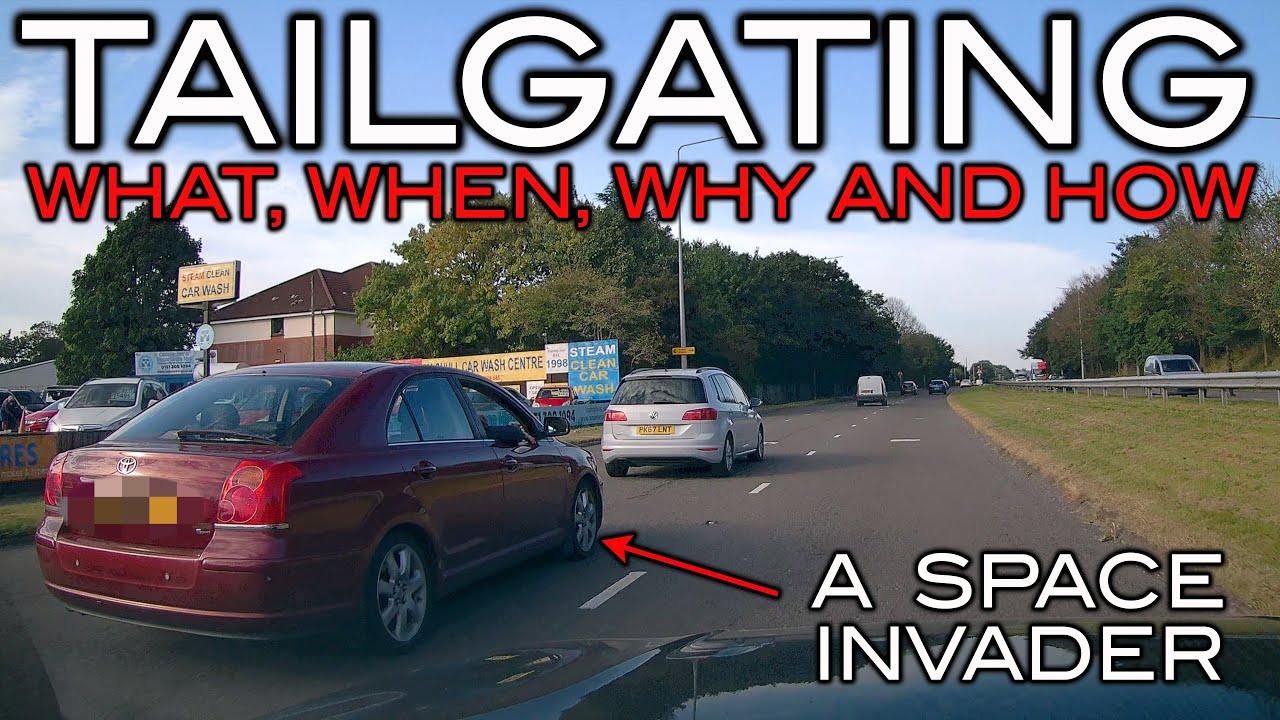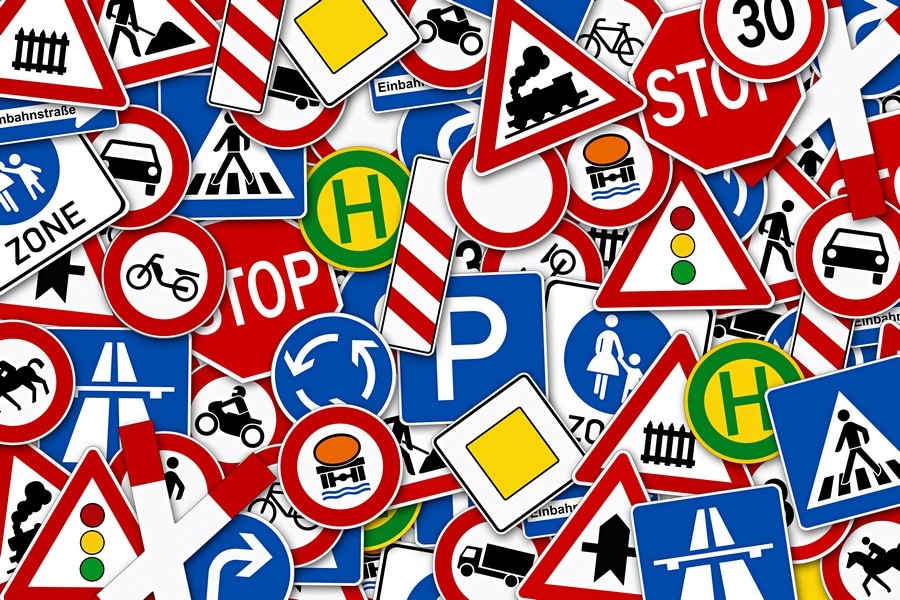
Understanding the Basics of Moving Off
The “Prepare, Observe, Move” (POM) routine is a fundamental technique for moving off safely and smoothly in a vehicle. It involves three key steps:
- Prepare:
- Ensure the handbrake is on and the gear is in neutral.
- Press the clutch down and select the first gear.
- Set the gas and find the biting point by slowly releasing the clutch until you feel the car start to engage.
- Observe:
- Check all mirrors (rearview and wing mirrors) and perform affective observartions around your vehicle, including blind spots.
- Signal your intentions if necessary.
- Move:
- Release the handbrake while gently lifting the clutch and increasing the gas.
- Adjust the steering as needed and fully release the clutch once the car is moving.
Why is Clutch Control Crucial for a Smooth Start?
Clutch control is essential for a smooth start because it allows you to manage the power transfer from the engine to the wheels. Proper clutch control helps prevent stalling and ensures a controlled and steady movement of the vehicle. Mastering clutch control involves:
- Finding the Biting Point: This is the point where the clutch plates begin to engage, and the car starts to move. It requires delicate balance and practice.
- Smooth Engagement: Gradually releasing the clutch while applying the right amount of gas ensures a smooth start without jerking or stalling.
How Does Finding the Biting Point Affect Moving Off?
Finding the biting point is a critical aspect of moving off because it marks the moment when the car is ready to move. Properly identifying and maintaining the biting point allows for:
- Controlled Movement: Ensures the car moves off smoothly without sudden jerks.
- Preventing Stalls: Helps avoid stalling the engine, which can be a common issue for learners.
- Confidence Building: Mastering the biting point builds confidence in handling the vehicle, especially in various driving conditions.
Where Do Learner Drivers Commonly Make Mistakes During This Process?
Common mistakes made by learner drivers during the moving off process include:
- Insufficient Observation: Failing to check mirrors and blind spots thoroughly before moving off.
- Poor Clutch Control: Releasing the clutch too quickly, leading to stalling or jerky movements.
- Inadequate Signalling: Not signalling intentions when necessary, which can lead to unsafe situations.
- Rushing the Process: Not taking the time to properly prepare and observe, leading to unsafe starts.
By understanding and practising the POM routine, mastering clutch control, and avoiding common mistakes, you can significantly improve your moving off technique and build a solid foundation for safe driving.
Exercises to Improve Clutch Control
Improving clutch control requires practice. Here are some exercises:
- Stationary Practice: In a safe, flat area, practice finding the biting point without moving off.
- Hill Starts: Practice on a slight incline to get used to the additional control needed.
- Stop-Start Drills: Repeatedly practice stopping and starting to build muscle memory.
Timing for Full Clutch Release
The clutch should be fully released once the car is moving smoothly. This typically happens after the car has started to roll and you have applied a bit of gas. Releasing the clutch too quickly can cause stalling, while too slowly can lead to clutch wear.
The Role of Observation in Safe Moving Off
Effective observation is crucial for ensuring safety when moving off. It involves a series of checks and procedures to ensure the road is clear and it is safe to proceed.
Key Elements of Effective Observation
Before moving off, you should perform the following observations:
- Mirror Checks: Regularly check your rearview and wing mirrors to be aware of the traffic behind and beside you.
- Blind Spot Checks: Turn your head to check blind spots that mirrors do not cover.
- Six-Point Check: A comprehensive check that includes looking over both shoulders, checking all mirrors, and scanning the road ahead.
Mirror and Blind Spot Checks
Mirror and blind spot checks are essential to prevent accidents. Here’s how they help:
- Mirror Checks: Ensure you are aware of vehicles approaching from behind or alongside.
- Blind Spot Checks: Identify any vehicles or cyclists that may be in areas not visible in your mirrors.
Importance of the Six-Point Check
The six-point check is essential for safety as it ensures you have a complete view of your surroundings before moving off. This check includes:
- Left Blind Spot: Look over your left shoulder.
- Left Wing Mirror: Check the left wing mirror.
- Rearview Mirror: Check the rearview mirror.
- Right Wing Mirror: Check the right wing mirror.
- Right Blind Spot: Look over your right shoulder.
- Road Ahead: Scan the road ahead for any immediate hazards.
Observations in Busy Traffic Conditions
In busy traffic conditions, observations should be more frequent and thorough. You should:
- Continuously Monitor Mirrors: Keep an eye on all mirrors to stay aware of the traffic flow.
- Perform Blind Spot Checks: Regularly check blind spots, especially when changing lanes or merging.
- Stay Alert: Be vigilant and ready to react to sudden changes in traffic.
By incorporating these observation techniques, you can significantly enhance your safety and confidence when moving off.
Implementing the POM Routine in Different Scenarios
The Prepare, Observe, Move (POM) routine is a fundamental technique for moving off safely. However, it requires adjustments based on different driving conditions, such as uphill and downhill starts.
Uphill Starts
Uphill starts require more control and power to prevent the vehicle from rolling backward. Heres how the POM routine varies:
- Prepare:
- Handbrake On: Ensure the handbrake is engaged to prevent rolling.
- Gear in First: Select the first gear.
- More Gas: Apply more gas than usual to provide enough power.
- Find the Biting Point: Slowly release the clutch until you feel the car trying to move.
- Observe:
- Check Mirrors and Blind Spots: Ensure the road is clear.
- Signal if Necessary: Indicate your intention to move off.
- Move:
- Release Handbrake: Gradually release the handbrake while maintaining the biting point.
- Smooth Clutch Release: Slowly release the clutch while increasing gas to move off smoothly.
Downhill Starts
Downhill starts are generally easier but require careful control to avoid excessive speed. Heres how to adjust the POM routine:
- Prepare:
- Handbrake On: Engage the handbrake.
- Gear in First: Select the first gear.
- Foot Brake: Use the foot brake instead of the biting point to control the vehicle.
- Observe:
- Check Mirrors and Blind Spots: Ensure the road is clear.
- Signal if Necessary: Indicate your intention to move off.
- Move:
- Release Handbrake: Gradually release the handbrake.
- Control with Foot Brake: Use the foot brake to control the speed as you move off.
Importance of Adapting the POM Routine
Adapting the POM routine to different driving conditions is crucial for safety and control. Each scenario presents unique challenges that require specific adjustments to ensure a smooth and safe start.
Safe Practice Locations
Learners can practice these scenarios in safe, controlled environments such as:
- Empty Car Park: Ideal for practising uphill and downhill starts without traffic.
- Quiet Residential Streets: Provide real-world conditions with minimal traffic.
- Driving Schools: Offer structured environments with professional guidance.
By practising in these locations, you can build confidence and proficiency in implementing the POM routine under various conditions.
Enhancing Moving Off in Heavy Traffic
In heavy traffic, moving off smoothly and efficiently is crucial. Here are some advanced techniques:
- Anticipate Traffic Flow: Observe the traffic ahead and anticipate when you will need to move off. This helps in preparing early and avoiding sudden movements.
- Smooth Clutch and Accelerator Coordination: Practice coordinating the clutch and accelerator to ensure a smooth start without jerking or stalling.
- Use of Handbrake: In stop-and-go traffic, use the handbrake to prevent rolling back and to maintain control.
Importance for Experienced Drivers
Even experienced drivers benefit from refining these techniques:
- Improved Fuel Efficiency: Smooth driving techniques can lead to better fuel efficiency.
- Reduced Wear and Tear: Proper use of clutch and accelerator reduces wear on the vehicles components.
- Enhanced Safety: Advanced techniques contribute to safer driving by ensuring better control and anticipation of traffic conditions.
Resources for Advanced Driving Techniques
Learners can find resources for advanced driving techniques through:
- Driving Schools: Enrol in advanced driving courses offered by reputable driving schools like Smart Drive UK.
- Online Tutorials: Access video tutorials and interactive courses that provide step-by-step guidance.
- Instructor Feedback: Utilise feedback from driving instructors to identify areas for improvement and practice advanced techniques.
By incorporating these advanced techniques, you can enhance your moving off skills and become a more proficient and confident driver.
Smart Drive UK: Enhancing Your Moving Off Skills
At Smart Drive UK, we are dedicated to helping you master the moving off technique through tailored lessons and unique teaching methods. Our approach ensures that you gain the necessary skills and confidence to move off safely and smoothly.
Tailored Lessons for Improving Moving Off Techniques
We understand that each learner driver has unique needs and learning styles. Our tailored lessons focus on:
- Individual Assessment: Evaluating your current skill level and identifying areas for improvement.
- Customised Practice: Designing practice sessions that address your specific challenges with moving off.
- Progress Tracking: Monitoring your progress and adjusting lessons to ensure continuous improvement.
Why Choose Smart Drive UK for Mastering the POM Routine?
Choosing Smart Drive UK for mastering the Prepare, Observe, Move (POM) routine offers several benefits:
- Experienced Instructors: Our instructors are highly trained and experienced in teaching the POM routine.
- Comprehensive Training: We provide thorough training that covers all aspects of the POM routine, ensuring you are well-prepared for real-world driving.
- Supportive Environment: Our lessons are conducted in a supportive and encouraging environment, helping you build confidence.
More Information About Smart Drive UK’s Offerings
Prospective learners can find more information about our offerings through:
- Website: Visit our website for detailed information on our driving courses and services.
- Contact Us: Reach out to us via phone or email for personalised assistance and to schedule lessons.
- Social Media: Follow us on social media for updates, tips, and success stories from our learners.
Contact Us for Expert Driving Lessons
Reaching out to Smart Drive UK can significantly benefit learner drivers by providing tailored instruction and expert guidance. Our professional instructors are dedicated to helping you master the moving off technique and other essential driving skills.



